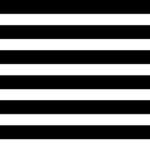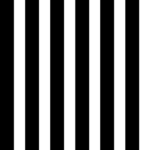There’s rarely a wardrobe I audit that doesn’t contain some form of stripe. Stripes are a classic that arguably never date – but they’re not for everyone. Some people struggle to wear them, fearing they might not be flattering. The truth is, when chosen wisely, stripes can enhance your look and complement your body shape beautifully. But only if you know how to get it right for you.
Understanding Stripes
The impact of stripes on perception has even been studied in visual science. A well-known example is the Helmholtz illusion, which shows that horizontal stripes can make shapes appear taller and narrower, while vertical stripes can make them look wider. You can see this clearly with a simple square, where horizontal stripes elongate it vertically, while vertical stripes do the opposite.
- horizontal stripes
- vertical stripes
However, when it comes to dressing the human body, the rules change slightly. Unlike a flat square, our figures are three-dimensional, meaning fit, fabric, and movement all come into play. This is why vertical stripes are often seen as slimming – they elongate the body by drawing the eye up and down, while horizontal stripes can highlight curves. But when worn thoughtfully, horizontal stripes can also help balance proportions, rather than just adding width.
Stripes and Body Shapes
The best stripes for you may vary, but it’s not just about shape – your height, scale, and proportions matter too, as does stripe placement. Here’s a quick guide based on body shape:
-
Hourglass: Look for stripes that highlight your waist. Diagonal or chevron patterns that draw the eye to your midsection can be especially flattering.
-
Triangle (pear-shaped): Horizontal stripes on the upper body will help balance out your shoulders with your hips.
-
Oval (apple-shaped): Vertical stripes work well to elongate the body and draw the eye up and down.
-
Rectangle: Vertical stripes can help create the illusion of curves and add interest or dimension.
-
Inverted triangle: Try horizontal or vertical stripes on the lower half to balance out your silhouette.
Using colour
Black and white or navy and white stripes may be classic, but they’re high contrast – and that doesn’t suit everyone. They can also feel too traditional or harsh depending on your style personality.
Choosing stripes in colours that complement your natural colouring softens their impact and enhances your features. Even subtle changes in stripe colour, width, or placement can make a big difference.
Spring Summer 2025 trends
Stripes are back this season – and I’ve featured them in the latest Spring/Summer 2025 Seasonal Update. So, if you’ve got some in your wardrobe, now’s the time to re-style them.
Add fresh accessories, a pop of colour, or even mix them with another print if that feels more like you. And if you’re ready to shop for something new, I’ve picked stripe-inspired pieces for each colour type in this season’s ‘Shop the Look’ guides. Find out more here.
Stripes can suit everyone – if you know how to wear them
Stripes can be incredibly versatile – but knowing how to choose the right ones for you makes all the difference. When you understand how different stripe patterns and colours work with your shape, style and features, you can wear them with confidence.
Get tickets to join the next workshop for your body shape, or go for the full Style & Shape Consultation – an in-depth 2.5 hour session including tips on patterns, proportions and how to make your wardrobe work harder.


